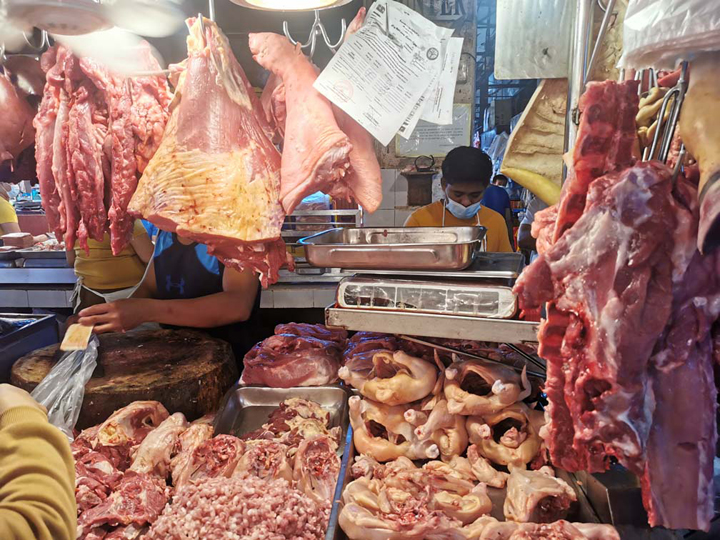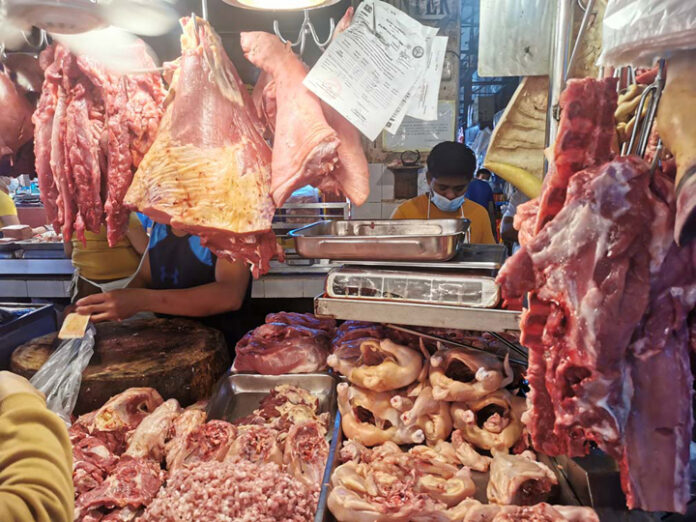
EXPENSIVE food, particularly pork products, caused the country’s inflation rate to post a two-year high in January, according to the Philippine Statistics Authority (PSA).
On Friday, National Statistician Claire Dennis S. Mapa said inflation surged 4.2 percent in January, the highest since January 2019 when inflation averaged 4.4 percent.
PSA data showed that inflation was at 3.5 percent in December 2020 while inflation was at 2.9 percent in January 2020.
“Ang pangunahing dahilan ng pag-angat ng inflation sa buwan ng Enero 2021 ay ang mas mabilis na pagtaas ng presyo ng Food and Non-Alcoholic Beverages [The primary reason for the increase in inflation in January 2021 is the faster increase in prices of Food and Non-Alcoholic Beverages],” Mapa said.
“Ito ay dahil sa pagtaas ng presyo ng karne, partikular ang baboy, na may mas mataas na inflation sa antas na 17.1 percent sa buwan ng Enero 2021, mula sa 10.0 percent inflation noong Disyembre 2020 [This is due to the increase in meat prices, particularly pork, which posted an inflation of 17.1 percent in the month of January 2021 from a 10 percent inflation (rate) in December 2020],” he added.
Inflation in Metro Manila or the National Capital Region (NCR) rose to 4.3 percent in January 2021, from 3.2 percent in December 2020. Inflation in the area in January 2020 was posted at 2.7 percent.
The 8.3 percent annual growth in food and non-alcoholic beverages index primarily pushed up the inflation in the area. Increases in the housing, water, electricity, gas, and other fuels index as well as double-digit annual hikes were also observed in the indices of alcoholic beverages and tobacco.
Outside NCR
Similar to the trend of the national level and NCR, inflation in AONCR went up further to 4.2 during the month, from 3.7 percent in December 2020. Inflation in the area in January 2020 was posted at 3 percent.
This was mainly due to the 1.3 percentage points jump in the inflation of food and non-alcoholic beverages, registering at 5.8 percent during the month, from 4.5 percent in the previous month.
Meanwhile, inflation for the bottom 30 percent income households accelerated to 4.9 percent in January 2021. This was the highest inflation recorded since January 2019 when inflation averaged 5.2 percent.
In December 2020, inflation for this income group of consumers was posted at 4.3 percent, and in January 2020, 2.3 percent.
The increase in inflation, PSA said, was due to higher annual increase in the index of the heavily-weighted food and non-alcoholic beverages at 4.6 percent during the month. Its annual rate in December 2020 was noted at 3.6 percent.
BSP policy tested
The more-than-expected inflation data in January is seen as a signal that space for easy monetary policy might be narrowing amid a shaky economic recovery. Stocks and the peso fell on news of the inflation data release.
The January 2020 inflation was the fastest since January 2019; above the central bank’s forecast of 3.3 percent-4.1 percent, and higher than all 19 analyst estimates in a Bloomberg survey, which had a median of 3.5 percent.
The peso dropped to the lowest in more than a week, while the Philippine Stock Exchange index slid 0.6 percent.
Steady rate
As price pressures build, some analysts expect the central bank to keep its benchmark interest rate steady at 2 percent for the whole year.
“Monetary policy is unlikely to tighten in this part of the economic cycle” even as financial conditions “must remain supportive” for domestic demand, said Eugenia Victorino, head of Asia strategy at Skandinaviska Enskilda Banken AB in Singapore.
Inflation will likely remain elevated in the coming months, with base effects from last year’s muted price increases and persistent cost pressures pushing the headline number close to or above the 4 percent level, according to Nicholas Mapa, an economist at ING Groep NV in Manila.
Bangko Sentral ng Pilipinas has said inflation is likely to remain in the upper half of its 2 percent-4 percent target in the first six months of the year, before easing to below 3 percent. In January, Governor Benjamin Diokno said there will be a “long pause” on the interest-rate front, with the current rate in place for another two quarters or more. Policy makers next meet on rates February 11.

